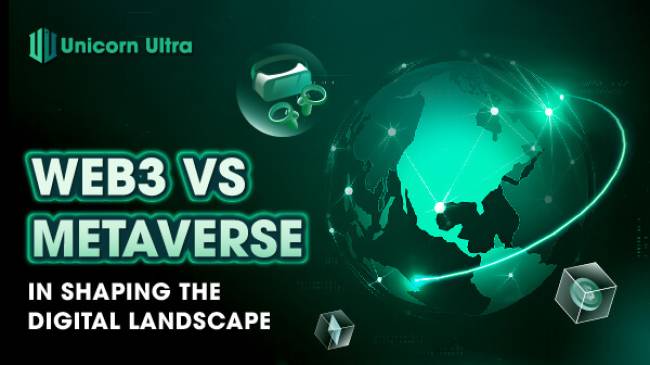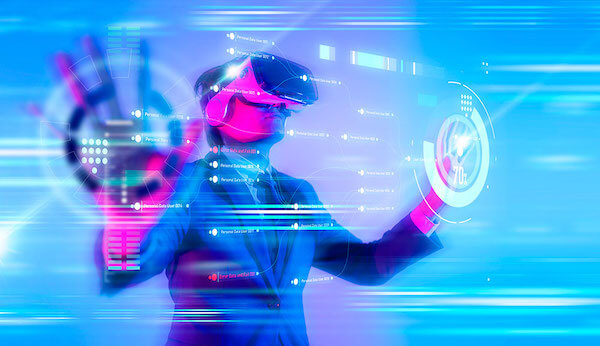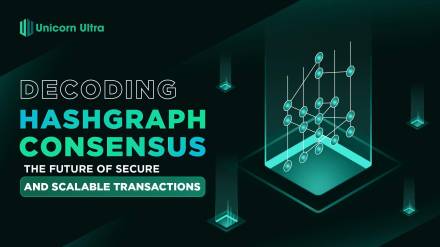In the ever-evolving realm of technology, two distinct yet intertwined concepts have emerged as frontrunners in shaping the digital future: Web3 and the Metaverse. Both concepts carry the promise of revolutionizing how we interact with the digital realm, opening up new possibilities for applications, user experiences, and scalability.
Let’s delve into the nuances of Web3 vs. Metaverse, dissecting their applications, scalability, and user experiences. Moreover, we explore the exciting convergence of these two paradigms and how they collectively usher in a new era of possibilities.
Table of Contents
Web3 vs. Metaverse: The Distinctions
Web 3.0 is a concept representing a decentralized iteration of the World Wide Web. The term "metaverse" denotes virtual realms that facilitate online social interaction through digital avatars. With the development of each, it's probable that we'll witness a greater integration of web3 technology into various metaverse environments.

Let's join Uniultra in exploring the similarities and differences between Web3 and the Metaverse. If you're not familiar with what Web3 is, please refer to the following article at this link!
Applications and Functions
Web3 refers to the decentralized version of the internet, driven by blockchain technology. It envisions a user-centric internet where individuals have control over their data and interactions, eradicating the need for intermediaries. On the other hand, the Metaverse is a virtual universe, a convergence of augmented reality (AR), virtual reality (VR), and the internet. It facilitates immersive experiences, enabling users to interact with each other and digital environments.
Scalability
Scalability is a vital factor for both Web3 and the Metaverse. Web3 seeks to address the limitations of traditional blockchains, aiming to enhance scalability through solutions like sharding and layer-2 protocols. The Metaverse faces similar challenges in delivering seamless experiences within vast virtual landscapes. Innovations in cloud computing and distributed networks play a pivotal role in achieving scalability for Metaverse platforms.
User Experiences
User experiences are being redefined by both Web3 and the Metaverse. Web3 empowers users with ownership of their data, granting them the ability to participate in decentralized applications (dApps) that uphold transparency and privacy. The Metaverse immerses users in interactive digital realms, revolutionizing how they socialize, work, and entertain. The convergence of these concepts could lead to seamless transitions between decentralized browsing and immersive virtual experiences.
Convergence: The Intersection of Web3 and the Metaverse
.jpg)
The convergence of Web3 and the Metaverse holds immense potential. Imagine a scenario where a user explores a virtual city within the Metaverse, purchasing virtual real estate secured through blockchain (Web3). This digital property could then be linked to their Web3 identity, allowing them to personalize their virtual space and conduct transactions securely. The interoperability of these concepts paves the way for integrated experiences that transcend current limitations.
Optimal Fusion: Harnessing the Power of Web3 and the Metaverse
As Web3 and the Metaverse intertwine, a new digital frontier emerges. Decentralized identities from Web3 can seamlessly navigate between the physical world, the decentralized web, and the immersive Metaverse. Transactions conducted in the Metaverse could benefit from the security and transparency offered by blockchain technology. Moreover, the merging of these paradigms could inspire the creation of innovative dApps that enhance virtual experiences, commerce, and communication.
Conclusion

In the grand tapestry of technological evolution, Web3 vs. Metaverse stand out as transformative threads. Web3's emphasis on decentralization and ownership complements the immersive and interconnected nature of the Metaverse. The harmonious convergence of these concepts promises to reshape the digital landscape, democratizing access, enhancing user experiences, and redefining scalability.
As we journey further into this digital age, the union of Web3 and the Metaverse beckons, inviting us to partake in a future where the possibilities are as limitless as the digital realms they create.






